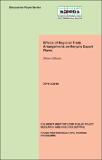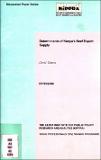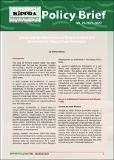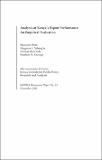Discussion Paper No. 113 of 2010 on Effects of Regional Trade Arrangements on Kenya's Export Flows
| dc.contributor.author | Githuku, Simon | |
| dc.date.accessioned | 2020-11-25T07:38:09Z | |
| dc.date.available | 2020-11-25T07:38:09Z | |
| dc.date.issued | 2010 | |
| dc.identifier.uri | http://repository.kippra.or.ke/handle/123456789/2262 | |
| dc.description.abstract | Kenya’s bilateral exports were positively affected by its productive capacity, absorptive capacity of its trading partners, and Kenya’s increased involvement in regional integration. Progression of COMESA from Preferential Trading Arrangement (PTA) to Free Trade Area (FTA) enhanced Kenya’s bilateral exports by 52.5 per cent. The problem on overlapping membership had no effect on Kenya’s exports. Policies to revitalize and accelerate economic growth in Kenya and its trading partners should be pursued. As distance variable has confirmed, Kenya needs to trade more with neighbouring countries. In particular, there is need to encourage development of key infrastructural sectors to reduce transaction costs, and also encourage active involvement of the country in regional integration efforts. Kenya can also choose to remain in EAC and avoid complications of being in more than one customs union, which is likely to raise the cost of doing business to traders. It is impractical for a country to belong to more than one customs union with differing Rules of Origin and tariff schedules. | en |
| dc.language.iso | en | en |
| dc.publisher | The Kenya Institute for Public Policy Research and Analysis (KIPPRA) | en |
| dc.relation.ispartofseries | Discussion Paper No.113 of 2010; | |
| dc.subject | Economic Growth | en |
| dc.subject | Regional Trade | en |
| dc.subject | Bilateral Exports | en |
| dc.subject | Export Flows | en |
| dc.subject | Kenya | en |
| dc.title | Discussion Paper No. 113 of 2010 on Effects of Regional Trade Arrangements on Kenya's Export Flows | en |
| dc.type | Discussion Paper | en |
Files in this item
This item appears in the following Collection(s)
-
Discussion Papers [326]




